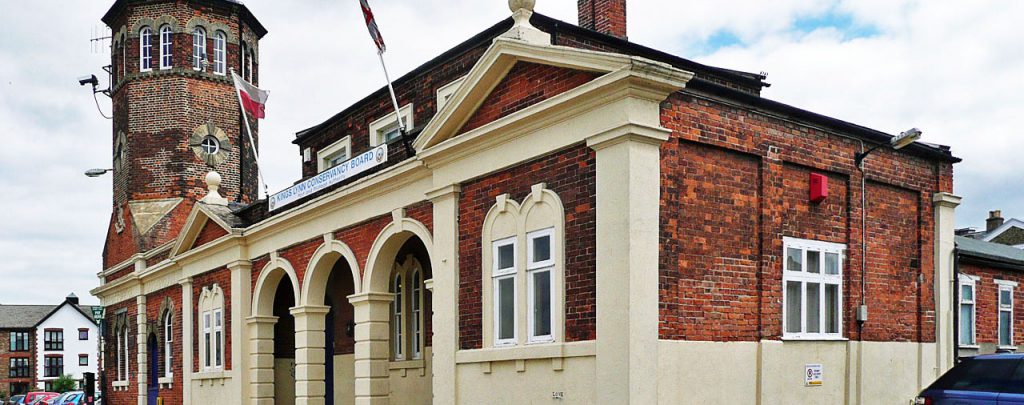The King’s Lynn Conservancy Board is the Statutory Port, Harbour and Pilotage Authority for King’s Lynn, providing pilotage and towage for the Port of King’s Lynn. Associated British Ports (A.B.P.) operate and have jurisdiction within the enclosed Docks, Riverside Quay and Fisher Fleet. A.B.P. have over 1300 metres of quay in enclosed docks and Riverside Quay. Vessels of 119m in length or draughts of 6.0 metres* (*Departing Riverside Quay) have been handled on suitable tides.
In 2022, the Port of King’s Lynn handled 420,939 tonnes of cargo carried by 191 vessels. The commodities handled were the staples of aggregates, barley, fertilisers, pulses, rape seed, scrap, soya, steel, stone, sugar beet, salt, timber, and wheat. At South Quay there is a NAABSA Layby Berth which can accommodate ballast vessels up to 85 metres and is operated by KLCB. The Board is a member of the British Ports Association.
Organisation
The Board employs fourteen staff providing a 365 day a year service, covering all functions from pilotage, port information service, port operations, pilot cutter, tug and buoy maintenance crews and administration. The Board operate two fast pilot cutters “St. Ann” & “United” to transfer the pilots to and from the ships in the Wash. The Tug “Conservator” is used to assist the larger vessels dock and undock safely and also provides emergency towage cover in the port approaches. The buoy vessel “St. Edmund” is used to maintain and move the navigation marks in the constantly changing approach channel. The Board own and maintain over 40 buoys and 12 beacons, which are deployed in the approach channel and the Wash. The Lightbuoys and Beacons are solar powered and the Buoys are changed and refurbished after 3 years on station. Almost the entire approach was changed in 2015, from the “Bulldog Channel” to the “Daseley’s Sled” and in 2022 we reverted back to the Bulldog Channel. Because of the constant changes, the Channel and Harbour are frequently surveyed using the “Ardenfast”, “Lynx” or pilot boats. In 2022 the “St. Edmund” carried out 16 buoy moves and changes to navigational aids, as a result of the changes to the approach channel.
